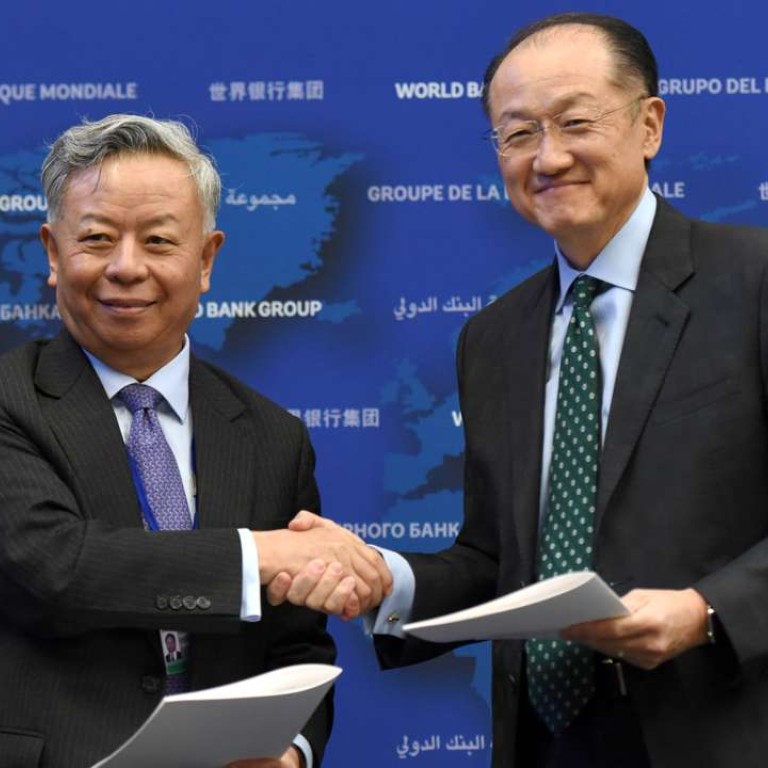
AIIB and World Bank reach deal on joint projects, as China-led lender prepares to approve US$1.2 billion of funds this year
‘A sizeable share’ of the Beijing-led bank’s funds expected to go on joint projects organised with US-dominated World Bank after deal agreed in Washington
The Beijing-led Asian Infrastructure Investment Bank and the US-dominated World Bank – originally seen as rivals – have signed an agreement to co-finance projects.
As part of the deal signed on Thursday – which comes as the AIIB prepares to announce its first batch of loans – the two banks are discussing nearly a dozen jointly financed projects in sectors including transport, water and energy in Central Asia, South Asia, and East Asia.
The AIIB is expected to begin lending from the second quarter of this year, after its high-profile inauguration in January. China’s Asian neighbours, such as Pakistan, are expected to benefit.
The two banks said the AIIB expected to approve US$1.2 billion in funds for development projects this year, with “a sizeable share” expected to go on joint projects with the World Bank.
Jin Liqun ( 金立群 ), president of the AIIB, said the bank was cooperating with both the World Bank and the Asian Development Bank (ADB) in approving the first batch of co-financed projects in June.
“I would say a huge amount of chemistry has already been nurtured between the AIIB and the World Bank, the AIIB and the ADB,” Xinhua quoted him as saying at an event hosted by the Asia Society Policy Institute in Washington yesterday.
The Beijing-led infrastructure bank has 57 members, but some major developed nations, including the United States and Japan, have not joined. Its establishment was seen as an attempt by Beijing to rival the World Bank and the ADB, which is presided over by Japan. Critics have expressed concerns over whether the operation of the AIIB is transparent and up to international standards.
Jim Yong Kim, president of the World Bank, said the joint agreement was “an important first step towards working with a new partner to address the world’s huge infrastructure needs”.
The World Bank said it would prepare and supervise the co-
financed projects in accordance with its policies in areas such as procurement, environment and social safeguards.
Chu Yin, an associate professor with the University of International Relations in Beijing, said the banks’ cooperation was a move to dispel doubts over the AIIB.
“China has strong competence in infrastructure construction and is rich in capital,” he said. “But it lacks the ability to manage the funds and is short of experience in communicating with foreign governments to process the projects. Therefore, it needs to leverage others’ strengths.”
Paul Haenle, director of the Carnegie-Tsinghua Centre for Global Policy, said the agreement showed that the AIIB wanted to be part of the global financing system, rather than create a new one.
“What Jin wants to do is to make sure the AIIB becomes a part of the existing structure of multinational development banks,” he said.
“But I think there is a financial aspect too. [The two banks] cannot fund everything by themselves. They both need partners, [and are] looking to private partnerships and also other multinational banks, too.”

